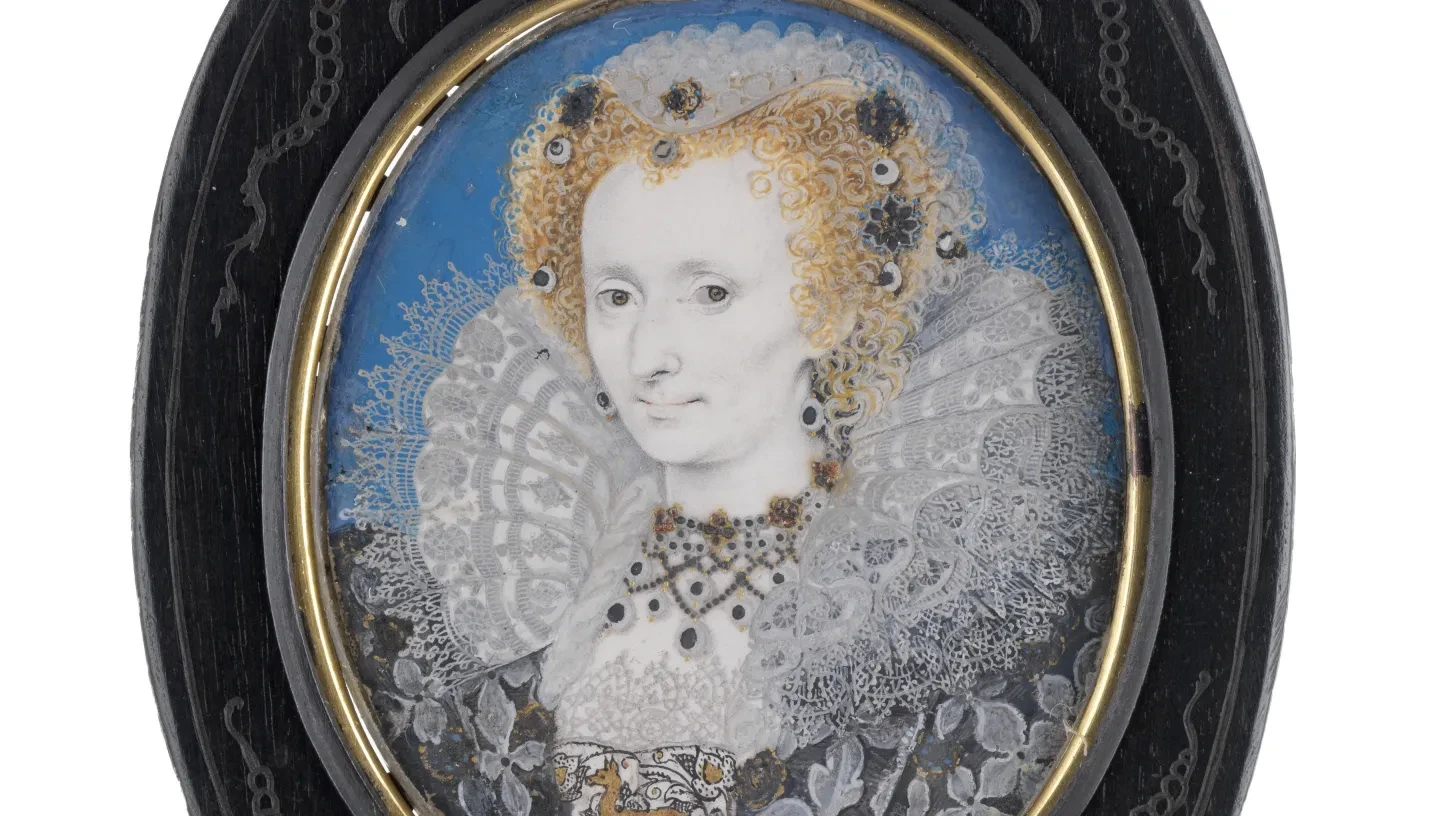
Beauty in the Stuart age
Get some 17th-century fashion tips - but don't laugh or the make up might crack...
Although time and expensive ingredients were lavished on appearances, beauty in the 17th century was seen as fleeting. Poor health and hygiene, with the use of poisonous materials, meant a woman was thought to be 'past her prime at 20, decayed at four and 20, and old and insufferable at 30'.
What did courtiers wear at the Stuart court?
Fashionable ladies and gentlemen followed the style of dress worn by King Charles I and his young French bride, Henrietta Maria. They wore clothes that displayed restrained elegance. Only rich people could afford the expensive fabrics that were required, such as silk brocade and edgings of hand-made lace. The favourite colours of the Queen were orange, blue, grey, peach, yellow and olive green, and these were often adopted by her courtiers. The more relaxed styles were a change from the more restricting and highly decorated clothes worn at the court of the previous king, James I.
Who wore make-up?
Men and women of the court both wore make-up. This had happened in Elizabethan times too, but now make-up was used more often, and there was a wider choice of lotions, powders and ointments than ever before.
What was the fashionable make-up of the time?
It was fashionable to have a very pale complexion. This demonstrated that a person was rich enough not to have to work outside in the fields. To make quite sure that skin remained pale, people sometimes wore masks when outdoors. Powders and creams could also help achieve pallor.
J. Bulwer wrote that "English ladies, who seemed to have borrowed some of their cosmeticall conceits from Barbarous Nations are seldome known to be contented with a face of God's making, for they are either adding, detracting or altering continually, having many fucusses (creams) in readiness for the same purpose. Sometimes they think they have too much colour, then they use art to make them look pale and faire. Now they have too little colour, then Spanish paper, red leather or other cosmeticall rubrigues must be had".
What ingredients were used in make-up recipes?
A pale complexion was achieved by making a cream from powdered white chalk or white lead, mixed with white of egg and vinegar. This made a smooth shiny finish and people had to be careful not to laugh or the new ‘skin’ would crack.
Urine was also considered good for the complexion. Samuel Pepys' wife tried the urine of puppies, although he did not report the effect! Another recipe to soften the skin, this time quoted by Lemery, was to wash in your own urine, or with rosewater mixed with wine, else make a decoction of the rinds of lemon.
The cheeks were reddened by adding a little cerise powder (white lead to which red colouring was added), or by using Spanish paper which was bought dyed red to rub on the skin. Lips were reddened with fruit juice or cochineal.
How did the ingredients of make-up affect people?
The use of these powders and ointments, especially ones containing lead and mercury, was very bad for the skin, and after a while resulted in scars and blemishes. To hide these it became the fashion for both men and women to wear patches on the face. These were cut into a huge variety of shapes and patterns, including stars, diamonds, crescent moons and even a tiny coach and horses. 17th-century street peddlers used to sing this rhyme about patches:
Heer patches are of ev’ry cut for pimples and for scars
Heer’s all the wand’ring planett signs
And some of the fixed starrs.
Already gummed to make them stick
They need no other sky
Nor starrs, for Lilly for to view to tell your fortunes by.
Come lads and lasses, what do you lack
Here’s weare of all prices
Here’s long and short
Here’s wide and straight
Heer are things of all sizes.
- Bourse of Reformation, 1640
Did 17th-century courtiers have mirrors?
Yes. Pocket mirrors were very expensive and especially prized. They usually had beautifully carved frames in silver, ivory or wood. The Venetians were the first to make 'looking glasses' by backing glass with silvery tin or mercury. They managed to keep this process secret for a long time, until the secret was smuggled to Paris by craftsmen working for the king of France. From Paris, the method began to spread throughout Europe, eventually reaching Britain, where the second Duke of Buckingham was soon patron of a fine mirror factory in Vauxhall in south London.
Where was make-up kept?
Lotions and perfumes were kept in china pots or glass phials which were stored in beautiful wooden boxes. The dressing room, decorated with silk hangings, became a reception room where the toilette was carried out in public. Vanity was no longer a sin, but a virtue.